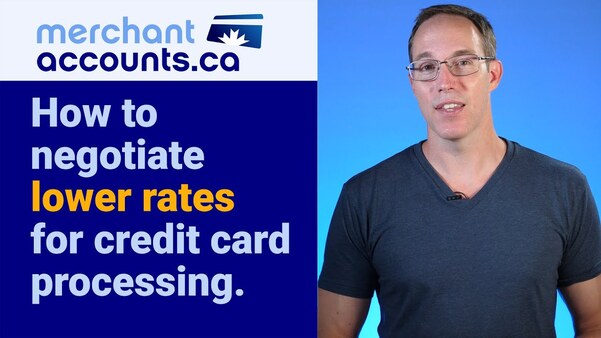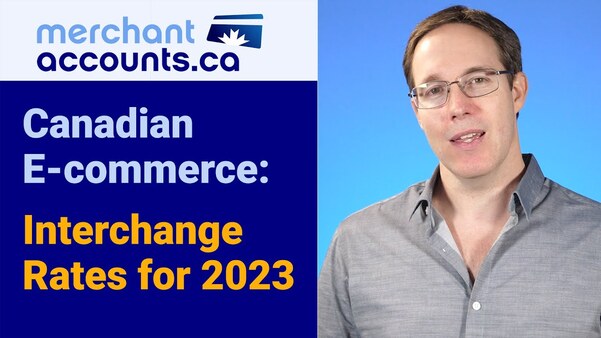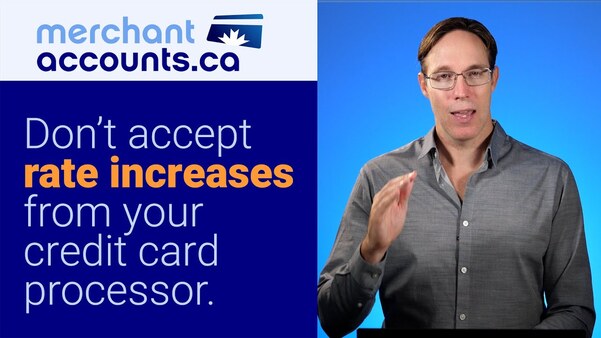Interchange Plus Pricing
Updated on September 16, 2022(Originally posted June 18, 2014)
by David Goodale
Interchange Plus Pricing
(Article updated 16 September 2022 with video and several edits)
Key Takeaways
1
Understanding interchange-plus pricing
Interchange-plus pricing is a transparent pricing model for credit card processing.
2
Interchange-plus pricing structure
Interchange-plus pricing consists of interchange fees, card brand fees, and a markup fee.
3
Advantages of interchange-plus pricing
Interchange-plus pricing provides transparency and cost savings compared to other pricing models.
Need help with this topic? Or a rate quote?
Whether its questions about this article, or you want to see how we can lower your costs. Don't hesitate to contact us.
Interchange plus is a pricing model in which a credit card processor clearly discloses the exact margin (profit) they will make for each credit card transaction they process. It is also sometimes referred to as "cost plus" pricing.

How Interchange Plus Pricing Works
Instead of quoting a traditional fixed discount rate (for example like 2.5%), a credit card processor can disclose their exact processing margin or profit above the straight interchange cost from Visa and MasterCard. (For example, interchange + 0.50%).
In order for this explanation to have any meaning, you must understand what interchange is. We have a separate in-depth article about interchange which can be found here. However, we can summarize by stating:
Interchange is the cost structure that Visa and MasterCard charge to every credit card processor. It is important to understand that every credit card processor must pay a fee to Visa and MasterCard each time a transaction is processed. The term used to describe this cost to the credit card processor is called "interchange".
How much does interchange cost?
It is important to clarify that interchange is first and foremost affected by the region. All credit card processors within a region (for example, Canada) are charged the same interchange structure from Visa and MasterCard. Secondly, we have to consider that different types of credit cards have a different interchange cost associated with them.
Below is a quick reference list for Canadian interchange rates:
(Updated to reflect interchange rates as of September 2022)
.
- Classic Visa: 1.40%
- Infinite Visa: 1.65%
- Core MasterCard: 1.67%
- Mastercard World: 1.90%
- There are more card types but these examples include some of the most popular cards.
The Canadian interchange rate on a Visa Infinite card (a rewards card) is 1.65%. The interchange rate on a Classic Visa card is 1.40%. This means that the Infinite Visa cards are 0.25% more expensive to process than the Classic Visa cards. The point to be aware of is that some card types have a higher interchange rate associated with them than for basic cards. Whether you choose Merchant Accounts.ca to be your credit card processor, or if you went with one of our competitors, no processor within the same region (ie: Canada, USA, UK, etc) can give you a better interchange rate because it is set by Visa and MasterCard.
A practical example
For an example, if you had a business in Canada and processed a Classic Visa card (which in Canada has an interchange rate of 1.40%), and your quote was for interchange + 0.50%, the actual fee for that transaction would be:
1.40% (interchange) + 0.50% (fee to processor) = 1.90%
Interchange is also affected by the location of the cardholder

It doesn't matter which credit card processor you choose to work with (at least as far as interchange goes) because all processors have the same cost structure from Visa and MasterCard within a region. That cost structure can be a little bit complicated if you want to dig into it on a granular level, but you really just need to understand that basic cards cost less, while rewards and foreign issued credit cards have a higher interchange cost. However, if you want to dig into it further you should check out our in-depth article about interchange, or better yet contact us to discuss your questions.
Why is interchange plus pricing less expensive than flat pricing?
Once you understand that your credit card processor has a cost that they must pay each time you run a transaction, and you understand that the interchange rate is determined based on the type of card used by the cardholder, you begin to understand that a credit card processor could actually lose money if they quoted a rate that was too low. A credit card processor cannot quote under interchange cost (or at least definitely should not) because they would lose money.
That is why flat discount rates cannot mathematically be quoted as low as an interchange plus rate. Flat rates do not fluctuate (regardless of the type of card used or the location of the cardholder). It's an old fashioned pricing model that was popular before cross border fees and super-premium cards were prevalent. It was often referred to as the "discount rate" or "merchant discount rate" (MDR). These days, flat pricing can only be quoted so low or the processor risks losing money on the rewards cards and especially foreign issued cards.

Beware Qualified / Non-Qualified Pricing
In this article we are comparing interchange plus pricing and flat pricing. Both are good, honest pricing models that provide good value to merchants. Although it is beyond the scope of this article to talk too much about it, in a future article (UPDATE: that article has now been published and can be found here.) we will be exploring the 3rd pricing model that is prevalent in the payments industry: qualified / non-qualified pricing. In summary, it is our strong opinion that merchants should never in any circumstance ask for qualified/non-qualified pricing. It is a pricing model that is based on providing a very appealing low rate to a merchant. The low rate might sound good at face value, but unfortunately the merchant will rarely pay that low "qualified" rate. At Merchant Accounts.ca we do not ever provide qualified/non-qualified pricing to our clients. Although there is nothing intrinsically wrong with that pricing model, it's simply unclear and gives merchants no accountability when they are negotiating their pricing. When the new article is published about qualified/non-qualified pricing we will update this article to link to it. In the meantime, we suggest staying away from qualified/non-qualified pricing, and if you have any questions about qualified / non-qualified pricing do not hesitate to contact us.
Disadvantages of Interchange Plus Pricing
- It can be a bit confusing to understand because the rate fluctuates based on the type of card used. (Rewards card, points card, airmiles card, corporate issued card, etc.)
- You won't know how much you'll be charged for any transaction until after the transaction occurs (because the actual interchange rate will depend on the type of card used). If you are trying to control these costs or work them into your product margins it's very difficult (or impossible) to do precisely when using interchange plus pricing.
- It can require a little bit more bookkeeping and administrative effort when reconciling transactions because of the fluctuating rate from interchange plus transactions.
- Smaller merchants may prefer the easier to understand simplicity of flat rates, even if it's a bit more expensive.
Advantages of Interchange Plus Pricing
- The absolute lowest way to price an account, especially for large merchants. A processor cannot offer a flat rate as low as an interchange plus rate (because if they guessed wrong and quoted a flat rate too low they could take a loss on the transactions.)
- Total cost transparency, and assurance of the value you are getting in exchange for the fee you are paying. (You never have to wonder how much money your credit card processor is earning from your account).
- If interchange is lowered by Visa and MasterCard the cost savings will be automatically passed onto you. (Not normally going to happen if quoted a flat rate).
- It's much easier to compare proposals if you are shopping around to receive quotations between various potential processors.
- With interchange plus pricing there is no chance of hidden fees whatsoever.
Summary
There is a reason why we put all of our large clients at Merchant Accounts.ca on interchange plus pricing: it's the only pricing model that transparently discloses how much money we (the processor) will earn from every transaction you process.
For that matter, there is a reason why we recommend flat pricing to most of our smaller clients (it's simple and easy to understand), and why we never, ever recommend qualified/non-qualified pricing to anyone. (If you are curious about our credit card processing rates head on over to our rates page).
If you operate a smaller business you may prefer old fashioned flat rates. Flat rates are always easier to reconcile and are definitely easier to understand. In some cases, a savings of a few dollars per month aren't worth it if reconciling your transactions is something that you struggle with. It depends on your preferences, your situation, and... well, it really comes down to a matter of preference.
If you are a larger merchant, or want the lowest rate, you absolutely should ask for (or demand) interchange plus pricing. The best thing about interchange plus pricing is it's like walking into a car dealership and asking the sales person "so, how much, exactly, will you make on the purchase of my new car?". With interchange plus pricing, the sales person has to answer, and answer honestly. It discloses everything, and gives you, the business owner, confidence and control when negotiating your processing costs.
Related Topics
March 29, 2023
Why do some businesses get lower credit card processing costs than others? In this video David explores the criteria that cause some businesses to get lower rates than others and techniques that you can use to reduce your processing costs.
June 21, 2017
It is extremely frustrating for merchants to be notified of an increase to your credit card processing rate. In many cases, these increases may be unfair and add unnecessary additional expense to your business. Fortunately, there are protections in place that can help protect your business should this happen to you.
February 14, 2023
David breaks down the current interchange rates for e-commerce merchants in Canada for 2023. These figures were taken directly from the Visa and Mastercard Canada interchange tables. These interchange rates apply not just to e-commerce transactions but also virtual terminal and other card-not-present type transactions.
June 24, 2020
Visa and Mastercard charge a very small fee called a card brand fee (also sometimes called an assessment fee). We will explore these costs and explain when they are incurred. Learn more about Visa and Mastercard assessment fees.
September 22, 2023
Some payment processors have a 'standard practice' of raising credit card processing costs on merchants. This is dishonest and unethical. In this video David explains when rate increases are reasonable (which is very, very rarely), and how to fight back when it does occur.
October 10, 2023
Some merchants that use Shopify express frustration over the Shopify percentage based fees that are charged per transaction. In this video David explains why payment processors charge percentage based fees (because of interchange fees and chargeback risk), and why most shopping cart software providers charge a monthly fee, but don't charge percentage based fees. He also discusses some options that some merchants have used in an attempt to lower their Shopify processing costs.
December 08, 2023
How much are credit card processing fees in Canada? Use our interchange chart and fee calculator to determine your exact processing costs.
April 22, 2024
In this quick video, David explains the simple math to help you figure out what your discount rate will be per month.
Learn How To Lower Your Credit Card Processing Fees
If you haven't reviewed your processing costs in a while take a moment to view our rates.
View Rates










